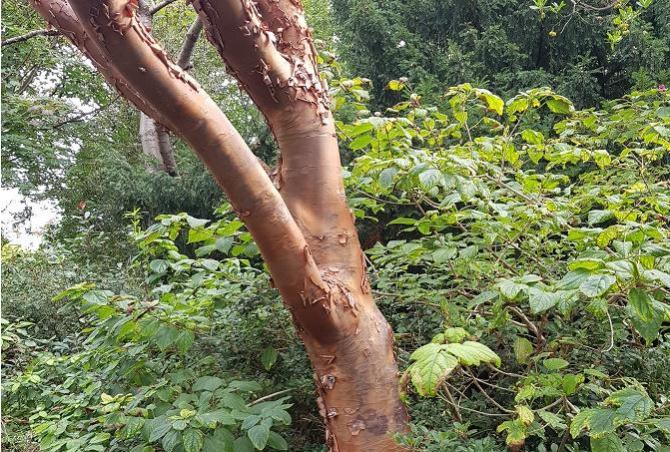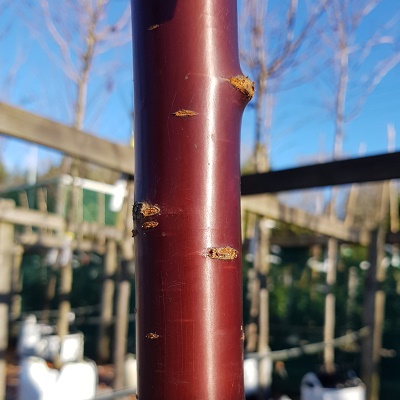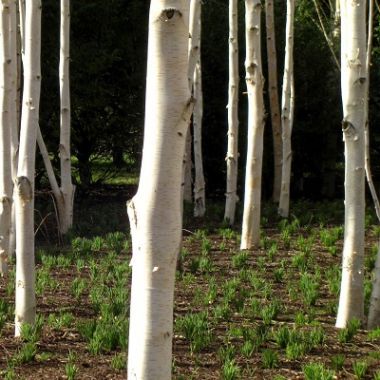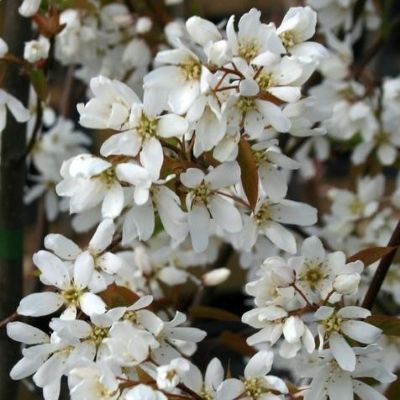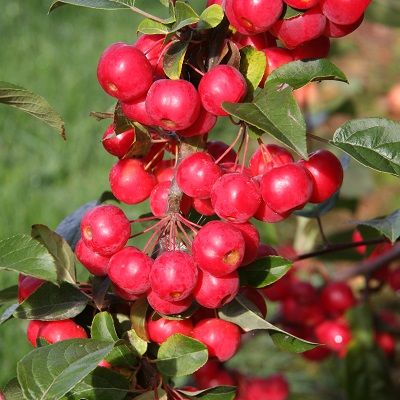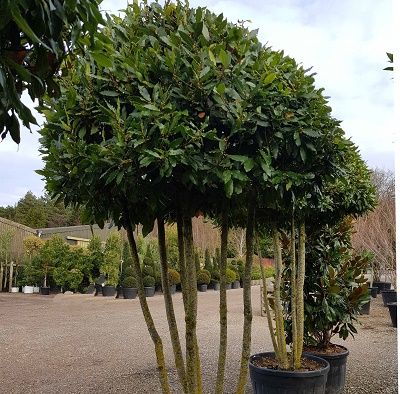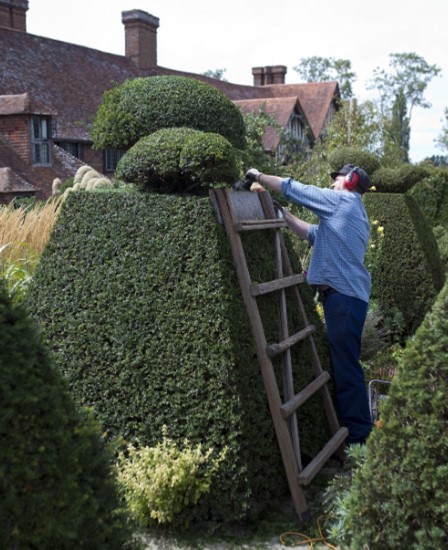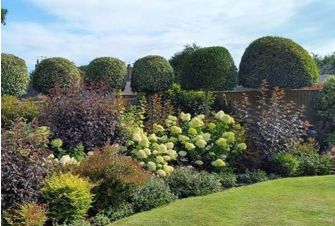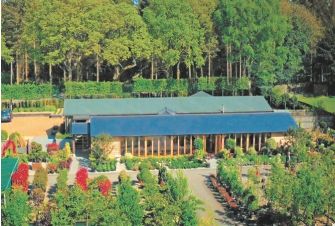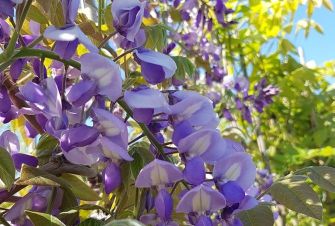Trees to provide year-round interest in UK gardens
Trees with year-round, multi-season interest are a great asset. It means that they never stop lending something beautiful to a planting scheme. These can be relied upon to create a permanent structure which is interesting in its own right. It might be due to a pleasing shape, stem colour, a continuous offering of different delights over the seasons such as flowers, scent, fruit or bark, or an unusual habit. These trees are the ones with the 'wow' factor all year long, rather than a temporary show which is over all too soon.
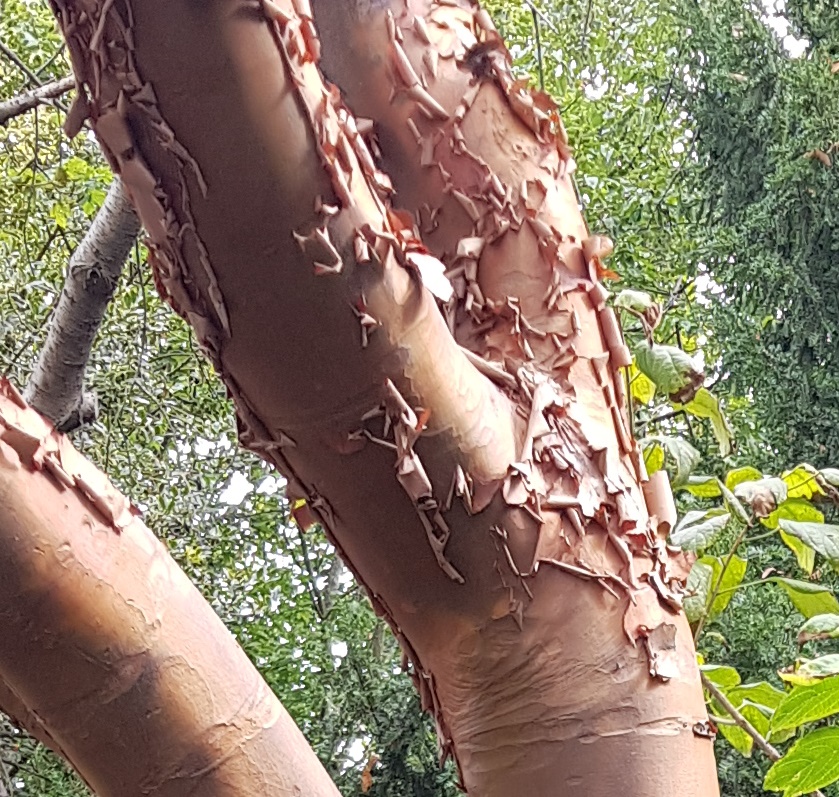
Acer griseum
Take Acer griseum, for example (pictured above). Paperbark maple is well-named because the cinnamon-coloured bark peels off like shreds of paper, to reveal a brighter, smooth and shiny orange-red colour underneath. The leaves are a pleasing shape, being trifoliate and a lush green, turning orange to red in autumn. When the autumn leaf show is over, this tree comes to the fore. You can fully appreciate the true beauty of the bark, which brings a rich, warm glow to the setting. Being a very slow-growing tree, it will pay to plant as large a specimen as you can afford, so that the effect can be admired right from the start. No wonder it has earned the prestigious Award of Garden Merit (AGM) from the Royal Horticultural Association.
Prunus serrula
The Tibetan cherry, Prunus serrula (pictured above), is equally as impressive because of the unusual bark. This one is rich, mahogany red which appears to be polished. The bark bears cherry's characteristic horizontal lenticels - the pores through which the tree 'breathes' and it peels back to reveal even brighter bark beneath. This ornamental cherry truly does get better with age - as the girth expands, so the spectacle becomes even more impressive. Don't expect magnificent spring blossom, however, these blooms are small and white. It's a tree that gives for 12 months of the year and is particuarly valuable during gloomy winter days when garden excitement is hard to find. Plant it against a contrasting backdrop so that the spectacle can be fully appreciated.
Betula utilis
Few people are able to resist the delightful charms of Betula, the white-barked birch (pictured above).Take Betula utilis 'Snow Queen', for example. It displays its bright white bark even earlier than Betula utilis jacquemontii, creating a ghostly glow from a distance and looking equally impressive when close-up. This wonderful family of small to medium trees offers so many benefits to gardens of all sizes. Trees can be planted as a close group, singly or consider a multi stem example. They produce only dappled shade because leaves are delicate and fluttering, turning a buttery yellow in autumn. The snow-white, peeling bark is paper-thin and looks stunning all year round and there are also catkins in spring.
Amelanchier trees
Amelanchier (pictured above) is a small tree or large shrub which is really hard to beat when it comes to multi-season appeal. The snowy mespilus, as it is commonly known, is also called Junebery and it keeps on giving from spring through to winter. Its star-shaped flowers cover the tree in clouds of white blossom on bare stems during springtime and these attract beneficial pollinators. Amelanchier produces edible dark fruits which are loved by birds in the summer, then the entire tree is set alight by red, yellow and gold hues during autumn. What's more, this glorious tree is compact enough for small gardens. What's not to love?
Ornamental crab apples
Most people love a flowering cherry, which hails from the Prunus family, but if you want to extend the seasons of interest, an ornamental crab apple, part of the Malus genus, (Malus 'Red Sentinel' pictured above) gives a little more freely. Not only do these small trees produce a profusion of blossom in springtime, but they then produce glorious crab apple fruits which can persist right through the winter. Crab apples can be turned into the most delicious crab-apple-jelly, if one has the patience, but if not, they feed the birds during a time of year when little else is available.
Evergreens with attitude
Evergreens should never be overlooked if you are seeking a tree for the garden to provide year-round interest. This can apply to many different types, because it's all about the shape and form. Multi stem trees with evergreen leaves, for example, will create architectural statements which are semi-permanent features, shown in the photo above, where Laurus nobilis, bay trees, have been trained into pleasing shapes. They simply need clipping to retain their neatness, and an occasional removal of foliage from the clear stems. Similarly, topiary is a form of tree that is seldom ignored. It might be a topiary elephant, a peacock, a group of spheres or cones. Even simple evergreens with plaited or spiral stems can create a sculptural form that brings a sense of permanence to a space. Evergreens bring structure, interest and screening for many different spaces. The plant itself needs only be simple, it's what you do with it that makes all the difference! The gardens of Great Dixter in East Sussex offer a fine example of topiary yews which bring a sense of order to a relaxed outdoor space.

